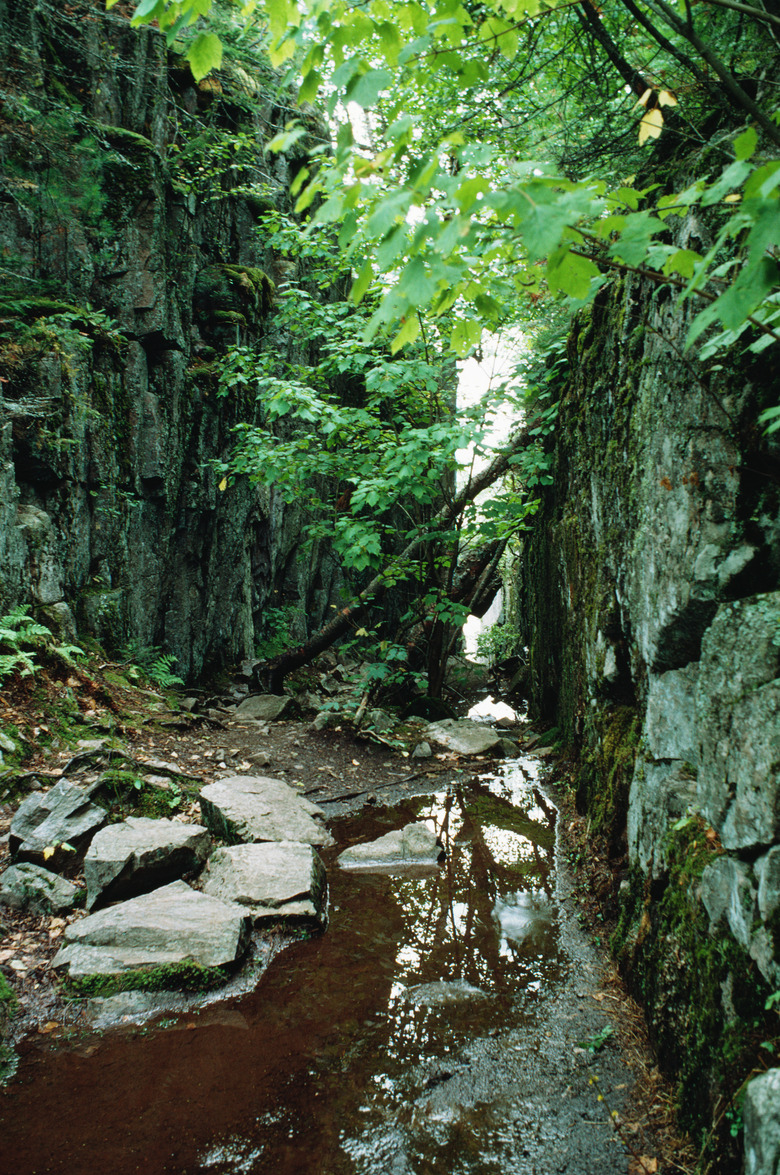Summary Of An Ecosystem
According to the Convention on Biological Diversity, an ecosystem is defined as a dynamic complex of plant, animal and microorganism communities and their nonliving environment that interact as a functional unit. In an ecosystem, all living organisms, including humans, form communities that interact with each other and with the air, water and soil. Ecosystems include desert, forest, mountain, wetland, riparian (rivers and streams) and agricultural landscapes.
Organization
Organization
In a forest ecosystem, plant and animal communities live in and around rivers and streams, in the canopy and on the forest floor. For example, fungi and bacteria live in communities within dead plant and animal material along the bottom of streams. Feeding on the fungi and bacteria are protozoa and small invertebrates that feed larger invertebrates such as worms and crayfish. The larger invertebrates feed vertebrates such as fish and reptiles.
Interactions
Interactions
The communities in an ecosystem may function separately, but they are linked to other communities and the nonliving components of the ecosystem. Amounts of rainfall and groundwater affect the amount of plant material falling from the forest into a stream. Plenty of plant tissue means fungi and bacteria are productive, worms and crayfish are healthy and the reptiles and fish have plenty to eat. Thus, ecosystems are vulnerable to decreases in rainfall and human interactions such as pollution, soil erosion and deforestation.
Functions
Functions
Ecosystems provide functions that are critical to human health. Regulatory functions include the provision of clean air, water, soil and biological control services. Photosynthesis and nutrient uptake converts energy, carbon dioxide, water and nutrients into food, raw materials and sources of energy. Habitat functions include reproductive habitat and refuge for plants and animals, contributing to the conservation of genetic diversity. Ecosystems also provide opportunities for recreation, enrichment and cognitive development.
Value
Value
Healthy ecosystems, especially forest and wetland systems, are ecological life-support systems. Wetlands provide natural water-purification systems and protect drinking water supplies. Forest ecosystems provide goods and services that are critical to human health and livelihoods. Traditionally viewed as free benefits and lacking a formal market, ecosystems have been largely overlooked in public, corporate and individual decision-making. The U.S. Forest Service is exploring ways to advance markets and payments for ecosystem services and stimulate market-based conservation and stewardship of these valuable resources.
Cite This Article
MLA
Tides, Ocean. "Summary Of An Ecosystem" sciencing.com, https://www.sciencing.com/summary-ecosystem-22832/. 24 April 2017.
APA
Tides, Ocean. (2017, April 24). Summary Of An Ecosystem. sciencing.com. Retrieved from https://www.sciencing.com/summary-ecosystem-22832/
Chicago
Tides, Ocean. Summary Of An Ecosystem last modified August 30, 2022. https://www.sciencing.com/summary-ecosystem-22832/
